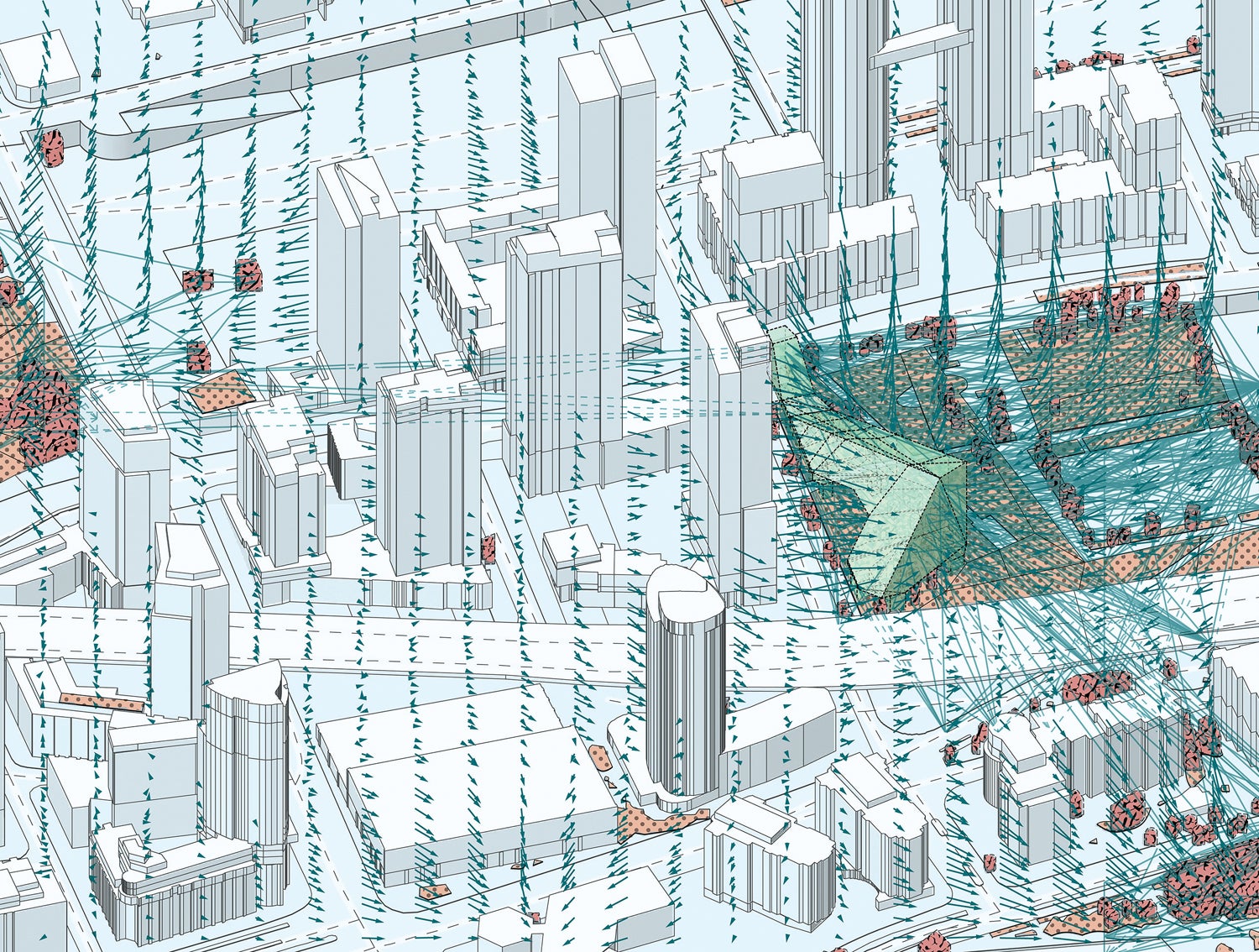Waterloo Architecture graduate Cameron Parkin's thesis, Coding a Biophilic Core: Digital Design Tools for Toronto’s Avian Networks, won a 2019 Canadian Architect Student Award of Excellence.
The annual awards honour design excellence for projects in the design and construction phases, as well as graduating student work. Awards are given for architectural design excellence.
Toronto’s downtown is rapidly densifying. One of the results is that residents have reduced access to biodiverse green spaces, which foster mental health and environmental responsibility. This project aims to move beyond ornamental lawns, exploring a dynamic strategy to creating complex urban habitats for flora and fauna.
The work explores computational methods of modelling networks and habitats that are borrowed from landscape ecology, graph theory, and parametric architecture. It involves simulating the two-dimensional and three-dimensional movement of birds through the city, and using this information to locate and inform a variety of interventions.

Two- and three-dimensional mapping is used to analyze the movement of birds through the city, and to locate interventions to facilitate their passage.
The Jury praised Parkin's thesis:
Rami Bebawi: "This goes beyond analyzing the problem and starts thinking of solutions."
Joe Lobko: "An imaginative exploration and analysis of the evolving life of birds in our densifying cities, proposing strategies for more effective understanding of behaviours and impacts while offering creative suggestions for the evolution of bird-friendly habitat."
Cindy Wilson: "This thesis takes a rigorous approach to a pertinent aspect of sustainability that is part of the health of urban environments. As cities continue to grow, how can we mutually benefit and exist with nature?"
Parkin's thesis Supervisor was Maya Przybylski and Committee Member was Jane Hutton.
Read the Jury Report.
Read the Canadian Architect article.